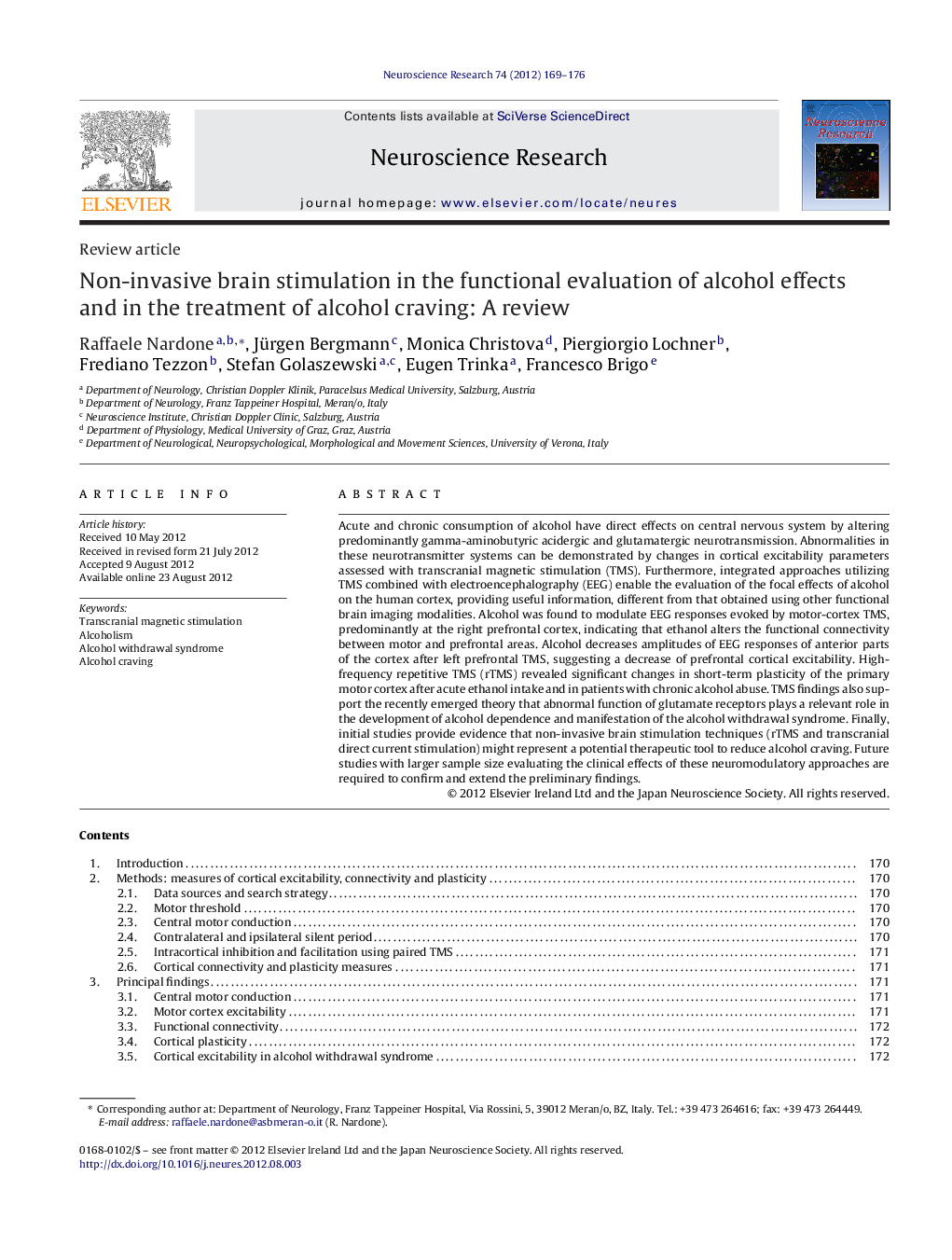| کد مقاله | کد نشریه | سال انتشار | مقاله انگلیسی | نسخه تمام متن |
|---|---|---|---|---|
| 4351574 | 1615307 | 2012 | 8 صفحه PDF | دانلود رایگان |

Acute and chronic consumption of alcohol have direct effects on central nervous system by altering predominantly gamma-aminobutyric acidergic and glutamatergic neurotransmission. Abnormalities in these neurotransmitter systems can be demonstrated by changes in cortical excitability parameters assessed with transcranial magnetic stimulation (TMS). Furthermore, integrated approaches utilizing TMS combined with electroencephalography (EEG) enable the evaluation of the focal effects of alcohol on the human cortex, providing useful information, different from that obtained using other functional brain imaging modalities. Alcohol was found to modulate EEG responses evoked by motor-cortex TMS, predominantly at the right prefrontal cortex, indicating that ethanol alters the functional connectivity between motor and prefrontal areas. Alcohol decreases amplitudes of EEG responses of anterior parts of the cortex after left prefrontal TMS, suggesting a decrease of prefrontal cortical excitability. High-frequency repetitive TMS (rTMS) revealed significant changes in short-term plasticity of the primary motor cortex after acute ethanol intake and in patients with chronic alcohol abuse. TMS findings also support the recently emerged theory that abnormal function of glutamate receptors plays a relevant role in the development of alcohol dependence and manifestation of the alcohol withdrawal syndrome. Finally, initial studies provide evidence that non-invasive brain stimulation techniques (rTMS and transcranial direct current stimulation) might represent a potential therapeutic tool to reduce alcohol craving. Future studies with larger sample size evaluating the clinical effects of these neuromodulatory approaches are required to confirm and extend the preliminary findings.
► Abnormalities in neurotransmitter systems in alcoholics can be assessed with TMS.
► Integrated TMS–EEG approaches enable the evaluation of the focal effects of alcohol on the human cortex.
► Alcohol decreases amplitudes of EEG responses of anterior parts of the cortex after left prefrontal TMS.
► Repetitive TMS revealed changes in short-term plasticity after acute and chronic alcohol consumption.
► Non-invasive brain stimulation might represent a potential therapeutic tool to reduce alcohol craving.
Journal: Neuroscience Research - Volume 74, Issues 3–4, December 2012, Pages 169–176